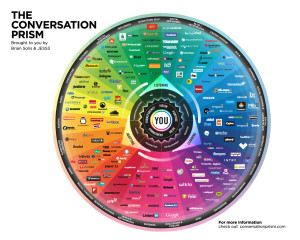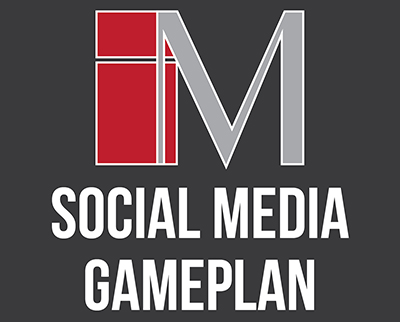With your analysis in place, it is time to develop what you have into a cohesive social media marketing plan. Building a social media marketing plan should be treated like you would any marketing plan. You wouldn’t just wing it with your television ads or billboards now, would you? Treat your social media plan with the same amount of attention and seriousness that you expect others to. If you want your customers/clients/fans to respond, you need to put the effort into giving them something worth responding to.
Being “on” social media is no longer good enough for a company. It is certainly better than not being online or marketing at all, but nowadays, your competitors are likely already also “on” the social medias. That means you need to do more. You need to win the social medias.
There are plenty of people out there that will try to tell you what to do in this stage – that developing a social media marketing plan can be as simple as copy-cut-paste-go. It doesn’t work that way. If you are a little cigar shop and you happen to find a very similar little cigar shop’s social media marketing plan then maybe you can just copy and paste and it won’t completely fail. But odds are you are a unique business and your marketing plan should be equally unique. So our plan is here to help you determine what to do, not necessarily hold your hand to do it.
In your analysis, you should have come up with your goals for what you want out of your social media platforms. In the developmental stage, we will build upon them.
Goals & Success Marks
We defined and came up with short, medium and long-term goals in our analysis. Now we are expanding on them to develop them into a plan. How do you reach those goals? What is your definition of success?
With each goal, set a success mark. If your goal is to expand your Facebook presence and generate conversation, what is considered successful? Perhaps going from 25 to 100 likes is a good goal to start with that is easily measured. You can look at your Facebook Insights and measure how much you increase your reach. Set goals that you can measure with the tools available to you. Don’t set goals that just say ‘I want to sell more stuff because Facebook.’ Not really a good goal and not really measurable. Much better to say ‘I want to increase likes by 15 percent per month and double our average reach by September.
Setting goals that you can measure is the only way to measure success. There is no limit to what kind of goals you can set, but for each one, have a success marker to measure how you are doing along the way. The same process should be repeated for all of your goals, no matter how short or long-term they may be.
Ask yourself “what do I want to get out of this campaign and how do I know when I’m there?”
Goal Summary
- Create Short-Term, Medium-Term and Long-Term Goals
- Set a Success Mark
- Measure Your Success vs. Your Goals
- Re-Analyze and Establish New Goals Regularly
Strategy & Voice
Part of developing your plan is also developing your style. As a business, determining what your style and voice will be should not be ignored, nor should it be casually figured out as you go. These are important things to figure out before you get going. What tone will be the tone and voice of your company? Fun? Serious? Both? Whatever your tone and voice is, stick to it. If your company has several people monitoring your social media channels, they should speak with the same voice. There can be exceptions to this, but as a rule of thumb, this is the safe way to handle your corporate platforms, especially when you are just starting out.
This ties into customer service also. If you deal with customers in your business, you are likely to have a customer service situation arise on one of your social media networks. If and when this happens, your social media plan should be prepared. Create a chain of command to get the response from the power-that-be to the customer. Respond accordingly and by your plan, rather than having the issue unresolved or have someone improv it at the time. Develop a plan of action for this and similar circumstances and get it out of the way in the planning stage.
The one thing you never want to do is ignore negative comments or questions. Address them and deal with the situation rather than ignore them or delete the comments. Better to have a plan in place for this now than deal with the headache later.
All Those Sites!

This is where things get tricky. There are so many social media sites out there, how do you choose where to be active and once you do that, how do you plan for each network?
Each network is different and you should research each one before jumping into them. Like I said in our analysis, get your name reserved on every site you may ever use, even if you end up never using it. Build your profile as if you are going to be active on a network even if you don’t think you ever will be active there.
What networks you are active on depends on your company, your market, your niche and your goals. Look into what each offers and what their audience is and you will likely come away with a good idea of where you need to be.
Once you have determined where your resources will be used, you can go back and do a mini-analysis with each one. Set goals for each, pick a voice for each, and start brainstorming your content strategy for each. No matter what you do, you need content.
Map out what you want the sites to do for you and create a gameplan for content. How much to post? How often to post? What to post? There is no perfect answer for these questions so brainstorm and research your market to see what you can do. In all honesty, your content plans will be ever-changing, so a simple outline will suffice at this point.
Go through each site and brainstorm or mind-map what your content might be, then when you implement the plan, you’ll have a list of ideas to draw from. Always keep this list growing. No matter how much content you think you have right now, a day will come where you are drawing a blank. I personally like to keep a notebook with me all the time in addition to my Evernote account. Then when inspiration hits me, I write down the idea for later use.
Once you have decided what sites to focus on, have set your goals for those sites and have drawn up some content ideas for each one, you are about ready to move forward with implementing your plan.
Tracking
We’ll get to this more later on, but for now at this point in the process, you need to determine how you plan to track your social media marketing. If you are using Google Analytics on your website (and there is no good reason you aren’t), you can track referrals and traffic to your site from each network with that.
This will not only show which social media sites are performing better at sending you traffic, but also what kind of content is working best for social media. If a certain kind of blog post is getting tons of traffic from Facebook and Twitter and another kind of post isn’t, you can build off of that.
With Facebook, you have access to Facebook Insights on your business page that will effectively track your likes, reach, and Facebook stats quite well. There are many, many third party sites that track social media stats as well.
I personally like to still use a pen and paper for some things. Before you start your campaign, write down all of your stats. Everything you can find. Facebook likes, Twitter followers, Pinterest followers, Alexa ranking, website page views, etc. Anything that looks like a number gets written down. Trust me, you’ll be thankful you have this when you look back later. You can also keep track of your search rankings if you’d like and you can use that to cross-reference your social media marketing with its effect on your search rankings.
Search and social are friends and you should remember that and treat them as such.
We’ll go over what to do with your tracking later, but for now, just pick what you will use and establish your base starting points. As the plan gets implemented, keep track of everything and you can adjust as you need to over time.
Ready?
At this point, your plan is pretty much mapped out. The next thing to do is get to posting and implement your plan! Social media, activate!
PART THREE: IMPLEMENT!
